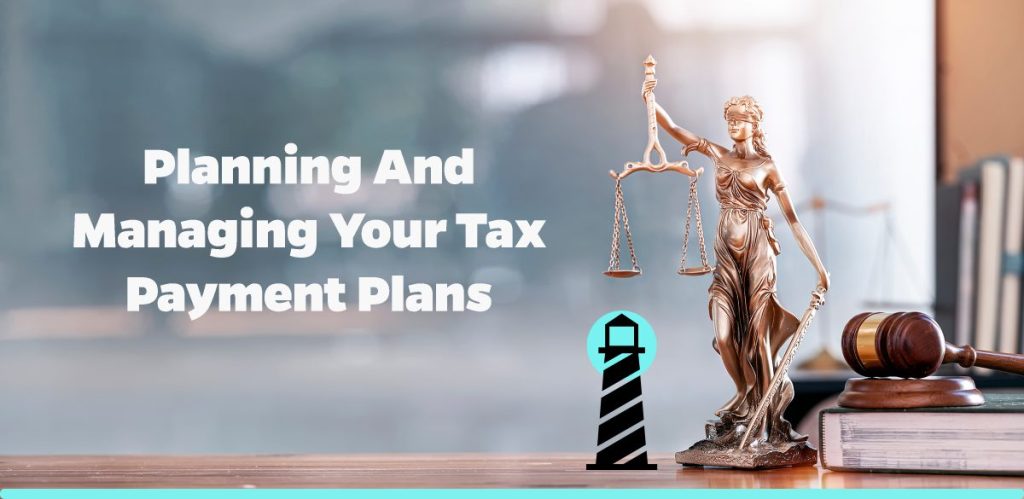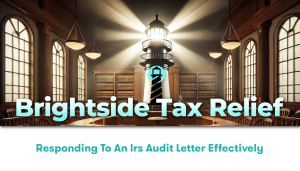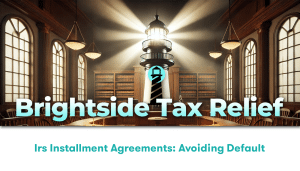Why Planning and Managing Your Tax Payment Plans is Crucial
It’s no secret that keeping up with taxes can be a pretty challenging task for most of us. Many individuals and businesses find themselves struggling to sort out their taxes when the due date looms large. However, with a little bit of planning and management, we can make the entire process hassle-free. This blog post bases on Brightside Tax Relief LLC’s perspective, which is a nationwide, reputable tax relief company. We will guide you on how you can effectively plan and manage your tax payment plans.
Understanding Tax Payment Plans
Before getting into the nitty-gritty of planning and managing your taxes, a basic understanding of what tax payment plans are is essential. The IRS (Internal Revenue Service) offers a tax payment plan, also known as an installment agreement. This plan allows taxpayers to pay off their owed taxes over a specific period in manageable installments. You need to apply and get approval from the IRS for a tax payment plan.
Types of Tax Payment Plans
The IRS offers several types of installment agreements to facilitate taxpayers for their convenience.
• Short-term payment plan: This plan is for taxpayers who can pay off their debt within 180 days.
• Long-term payment plan: If you cannot pay your debt in 180 days but can do so in more than that duration, this plan is for you.
• Business payment plan: This plan is specifically for businesses to address their tax liabilities.
Benefits of Tax Payment Plans
Choosing a tax payment plan can help you in multiple ways.
• It reduces the financial burden by allowing you to pay the owed amount in numerous installments rather than a lump sum amount.
• It saves you from potential IRS enforcement action like a tax lien or levy.
• It provides you peace of mind as you have a clear plan to pay off your tax liabilities.
Planning and Managing Your Tax Payment Plan
Successfully planning and managing your tax payment plan involves a series of steps.
Calculate Your Tax Liability
The first step towards planning your tax payment plan is to calculate your tax liabilities accurately. To avoid any complexities in the future, understand the tax code or take help from a tax professional.
Choose the Right Payment Plan
Depending on your ability to pay off the debt and the amount you owe, choose a payment plan that suits your situation best. Consider your financial situation and budget before opting for an installment agreement.
Apply for the Payment Plan
Once you’ve chosen a suitable payment plan, the next step is to apply for it. The IRS provides an online application (found here) for applying for tax payment plans. If you’re not comfortable doing this online, you can also mail the application or call the IRS.
Commit to Your Payment Schedule
After applying for the payment plan, it’s important to remain committed to the schedule. Failing to keep up with your payments can lead to complications.
Consider Professional Tax Help
Managing your taxes can be a complex process. With professional tax help from companies like Brightside Tax Relief LLC, you can easily navigate through it.
Monitor Your Payment Plan Regularly
Like every other financial commitment, a tax payment plan should be regularly monitored. Keep track of your payments and debts to avoid any future surprises.
Conclusion
Planning and managing your tax payment plans can relieve you of a significant mental burden. It allows you to stay in control of your financial situation and avoid any unprompted encounters with the IRS. By calculating your tax liability accurately, choosing the right payment plans, and committing to your payment schedule, you can manage your tax payment plan effectively. Remember that achieving this doesn’t have to be a sole journey. There are various professional tax relief companies, such as Brightside Tax Relief LLC, ready to assist you with your financial worries.




